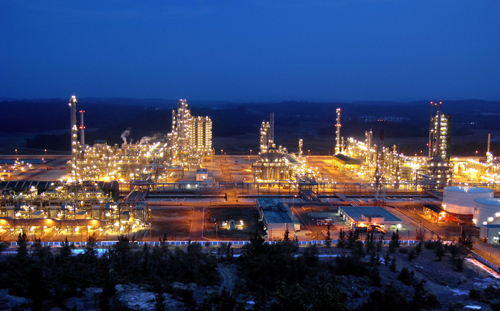
HÀ NỘI — There has been increasing pressure on refineries to increase production as petrol prices continued to spike in recent months, according to Bùi Ngọc Dương, director-general of Bình Sơn Refining and Petrochemical JSC (BSR), which runs one of the country’s largest refineries, the Dung Quất Refinery.
The refinery accounted for over 30 per cent of Việt Nam’s petrol demand since the beginning of the year.
Dương said the refinery had been running at 109-112 per cent capacity during April and May to meet market demand. It’s very unlikely that the refinery can ramp up production capacity any further from now until the end of the year due to safety concerns.
According to the Ministry of Industry and Trade, the country’s demand for petrol products in the second quarter of 2022 was estimated at 5.2 million cubic metres and 20.6 million cubic metres for the entire year.
Rising global oil prices, logistics costs and China’s restricted export of petrol products have contributed to higher petrol prices in Việt Nam since February.
To make matters worse, the Nghi Sơn Refinery has been struggling to run at full capacity, which should cover 40 per cent of the country’s demand, due to various technical and financial issues.
Meanwhile, supply during the second quarter was estimated at 6.7 million cubic metres, with 1.8 million coming from Nghi Sơn Refinery, 1.9 million from Dung Quất Refinery, 1.5 million from imports and 1.5 million from storage. The ministry forecast that supply should be sufficient for the second quarter, with some excess for the next quarter’s planning.
To deal with any shortfall in domestic production, petrol traders were told to import an additional 800,000 cubic metres per month or 2.4 million for an entire quarter.
Traders, however, have been voicing concerns over several difficulties in importing oil, including shipping costs, supply chain risks and long transport, which typically takes 46-60 days, from the US.
Chairman of BSR Nguyễn Văn Hội said it would be challenging to ensure supply for Dung Quất Refinery. Currently, the refinery relies on domestic supply for 70-80 per cent of its input, with the rest being imported.
In addition, input cost has steadily increased over the years. For example, BSR used to pay US$1.5-2 in a surcharge per barrel before 2019. The refinery paid $3-4 in 2020-21 and is currently paying $5-6 per barrel for the same surcharge.
They asked the Government to remove taxes on intermediate use during the refining process, which is being taxed at 5 per cent now, while crude oil enjoys a 0 per cent import tax.
“In essence, intermediate use is classified as an input, not unlike crude oil,” Dương said.
BSR’s management has also called on the Petrovietnam and the Government to prioritise supply for the refinery before exporting to ensure the refinery can stay at high capacity to better meet domestic demand. — VNS
- Reduce Hair Loss with PURA D’OR Gold Label Shampoo
- Castor Oil Has Made a “Huge” Difference With Hair and Brow Growth
- Excessive hair loss in men: Signs of illness that cannot be subjective
- Dịch Vụ SEO Website ở Los Angeles, CA: đưa trang web doanh nghiệp bạn lên top Google
- Nails Salon Sierra Madre
 VnExpress News The News Gateway of Vietnam
VnExpress News The News Gateway of Vietnam





